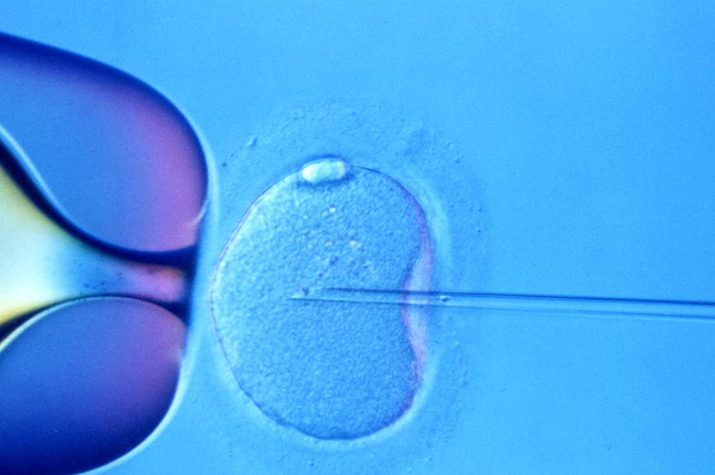 It combines of two categories:
It combines of two categories:
Fertility preservation
What it means?
The treatment for cancer is becoming better day by day leading to higher life expectancy and even cure in some cases. However, the medicines given for this affect the fertility potential of the person by destroying the sperm and ova producing cells of the human body. This is an important consideration for young people affected by the disease who are still to complete their families or even get married. Therefore, few procedures may be done to preserve their reproductive cells so that they are able to become genetic parents in future.
Who are suitable candidates?
Young men and women likely to undergo chemo or radiotherapy, but have not yet become parents.
What are its main steps?
Counselling is important for these patients especially if the disease is in early stage.
- Males – fertility preservation in males who have reached puberty is easy as it requires semen cryopreservation. 2 or 3 samples (given by masturbation) may be preserved before starting chemo or radiotherapy
- Preservation in children is difficult and still under research
- Females – it is more difficult than in males and varies according to situation.
- Children – requires ovarian tissue preservation which is still under research
- Unmarried women who have attained puberty – patient can be stimulated with the help of hormonal injections, followed by oocyte retrieval. Oocytes thus obtained can be cryopreserved for future use.
- Married women who have not completed their families – an IVF cycle is performed for the patient, wherein ovaries are stimulated by hormonal injections to retrieve eggs. These eggs are fertilized with the husband’s sperm. Embryos thus formed are cryopreserved till the patient completes chemo or radiotherapy after which these can be implanted in the woman’s uterus.
Advantages:
- Effective method for fertility preservation
- Easy and cost effective method in males
Disadvantages:
- For females the method is difficult, time consuming and expensive
Recurrent implantation failure
What it means?
The term recurrent implantation failure is used for patients who have had previous two or three filed IVF attempts.
Who are suitable candidates?
Women who have had 2 or 3 failed IVF attempts.
What are its main steps?
RIF may be due to various causes which need to be corrected-
- Improving endometrial receptivity
- Hysteroscopic correction of cavity pathology – myomectomy, polypectomy, septectomy, adhesiolysis
- Myomectomy
- Treatment of thin endometrium – sildenfil, high dose estrogen
- Endometrial stimulation (biopsy)
- G-CSF
- Immunotherapy (intravenous immunoglobulin, steroids, aspirin and heparin)
- Treatment of the embryos
- Preimplantation genetic screening
- Assisted hatching
- Zygote intra-Fallopian transfer
- Co-culture
- Blastocyst transfer
- Improving ET technique
- Male factor
- Assessment of DNA fragmentation
- IMSI
- Multifactorial treatment options
- Treating endometriosis
- Salpingectomy in case of hydrosalpinges
- Tailoring the stimulation protocols
- Use of donor gametes
Advantages:
- May be successful if proper investigation and treatment done
Disadvantages:
- Expensive and time consuming procedures
Advanced Andrology
What it means?
Advanced andrology means specialized tests for the male partner in order to diagnose conditions responsible for male infertility not diagnosed by routine semen examination
Who are suitable candidates?
- Cases recurrent IUI , IVF ,Fertilization failure.
- Before IVF
- Older age men
- Men with life style and chronic diseases
- Men with high proportion of dead sperms
- Men with persistent pus cells.
- Who should not get advanced andrology tests?
- First semen examination
What are its main steps?
- Semen collection by masturbation
- Special tests in laboratory
- Reporting
Advantages:
- Male infertility can be accurately diagnosed.
- Appropriate treatment can be proposed
- Monitoring of treatment can be done
Disadvantages:
- Cost
PGD/PGS
What it means?
Pre-implantation genetic diagnosis (PGD) or screening (PGS) is a process by which few cells are taken from the blastocyst formed after IVF procedure and chromosomal analysis is done on them to check for any genetic diseases
Who are suitable candidates?
Patients with-
- Recurrent abortions
- Recurrent implantation failure
- History of genetic disease in family
What are its main steps?
- patient is stimulated according to an IVF cycle and embryos are formed
- the embryos formed are grown upto the blastocyst stage (needs 4 to 5 days of culture)
- few cells are removed from the embryo after penetrating the wall and sent for chromosomal analysis
- the embryos are cryopreserved pending report of chromosomal analysis
- embryos with normal report are transferred into the patient’s uterus at a later date in frozen embryo transfer cycle.
Advantages:
- Useful procedure for patients with history of genetic disease in family with good success rate.
Disadvantages:
- Additional cost
- Risk of abortion not completely eliminated
- Legal status
- No prohibition
Embryoscope
What it means?
Embryoscope is an advanced equipment for the purpose of embryo culture. It allows for continuous culture of embryos without any interference from outside so that embryos may grow under ideal conditions. It has-
- Tri-gas Incubator with advanced temperature control
- Build-in microscope for acquisition of time-lapse images
- 6 patients with 12 embryos each = 72 samples
- Automatic startup and un-attended operation
- External workstation for monitoring, evaluation and image analysis
Who are suitable candidates?
Can be used in all patients going for IVF-ICSI
Advantages:
- Reduced handling of embryos as observations made from inside incubator
- Direct heat transfer allows for uniform distribution
- Active carbon and HEPA filter
- UV disinfection of circulated Air
- Tri-gas mixer fro optimal growth environment
- Time-lapse imaging allows for better choice between embryos
- Embryos are undisturbed and can be assessed without opening the incubator again and again
Disadvantages:
- High cost of equipment
